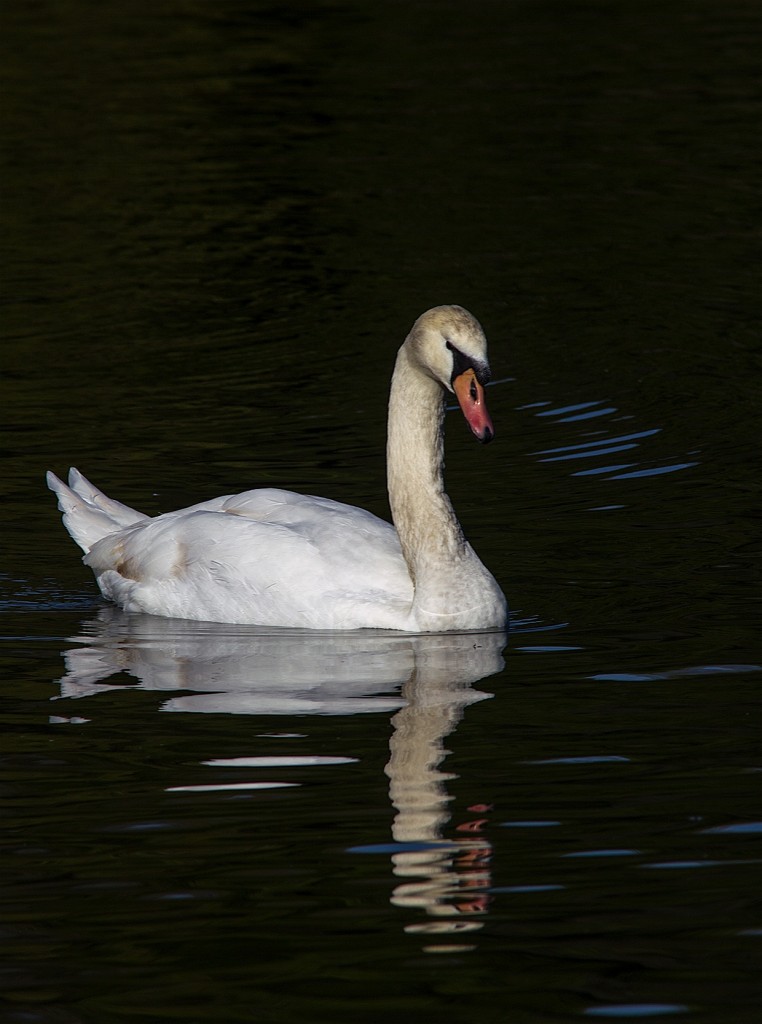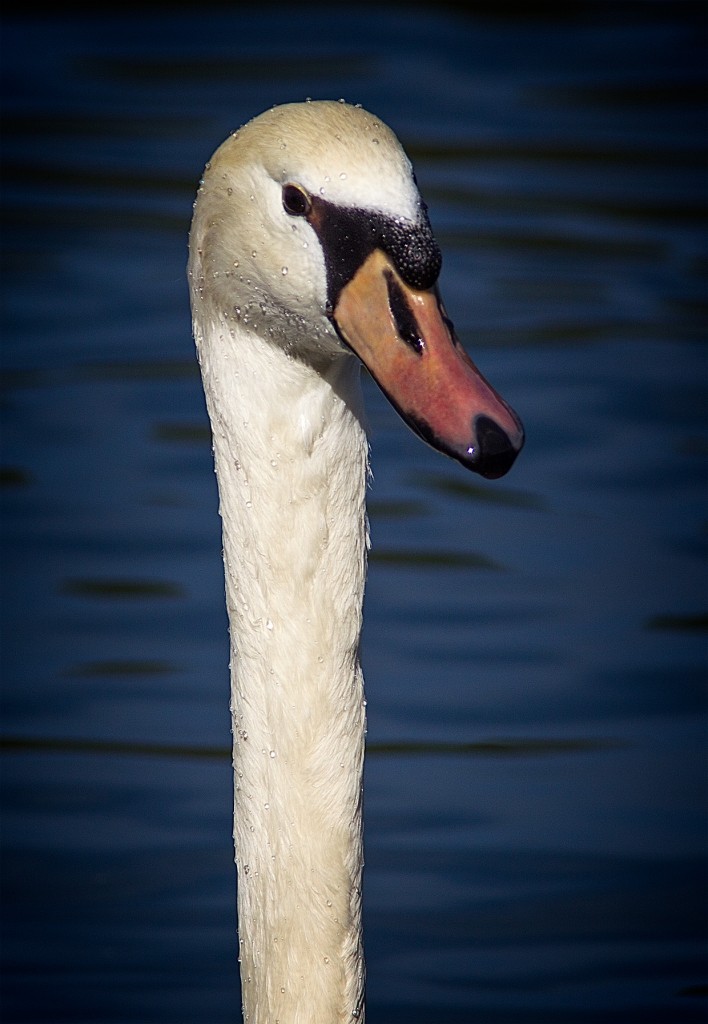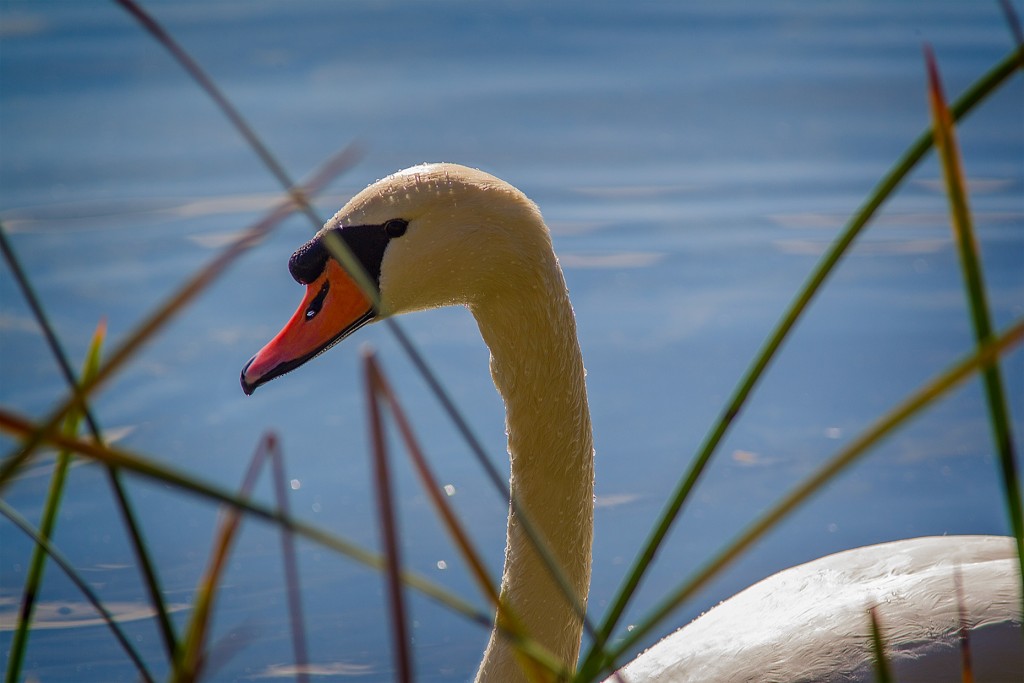There’s no doubt that one of the highlights of visiting Lake Ralphine in Santa Rosa is the chance to photograph the swans closeup. Although I occasionally see migrating swans in Washington, I’ve never had the chance to shoot them up close. Of course, the year-round swans in Lake Ralphine are hardly “wild,” but their beauty more than makes up for any lack of wildness.
I can’t resist the beauty of shots like this.
Eventually, though, beauty, at least “accepted” beauty, is not enough. You begin to search for new ways to see your subject. For instance, it’s probably the expressive curve of the swan’s neck that sets it apart from most birds, but a closeup like this shows better just how long that neck really is.
Seen in isolation, that neck reminds me a lot of an ostrich, not a bird that’s ever struck me as particularly “beautiful.”
Seen from a different angle, the swan’s beak seems quite remarkable,
even more so if you click on the picture to enlarge it and examine the rows of “teeth.” In the end beauty, indeed, seems to follow function.
That long, graceful neck and unique beak make it possible for the swan to find food where smaller birds would find it difficult if not impossible.




These swans showed up at Lake Ralphine in 2012. They probably came from Laguna Lake in Marin County, along the Chelino Valley road to Marshall. There are about 30 wild swans on Laguna Lake.
Thanks for the additional facts, Rod. Unfortunately I’m only in Santa Rosa a couple times a year.
The coloring of the bill in these photos suggests that these are yearling swans. The reddish color is indicative of young swans. As they age the bill will turn yellow, with no reddish tint.